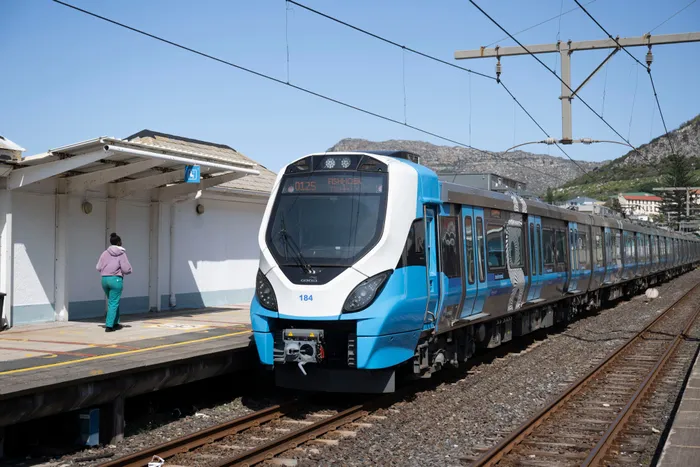SA aiming to re-establish rail as the backbone of people and goods transport: Minister Creecy

Private sector investment will become a priority as South Africa aims to revive its railway network.
Image: Henk Kruger / Independent Newspapers
South Africa’s railway system has seen a significant decline in recent years due to factors such as corruption and mismanagement of infrastructure, but Transport Minister Barbara Creecy says significant progress is being made in turning the situation around.
Speaking at a Roundtable event in Midrand on Thursday, which marked the official launch of National Transport Month, Creecy said her department intended to re-establish rail as the backbone of transport for people and goods.
She said the country’s rail reform roadmap was informed by the White Paper on the National Rail Policy of 2022 and complemented by the National Freight Logistics Roadmap of 2023.
Although this roadmap clarifies that strategic infrastructure such as rail lines and ports should remain in public ownership, limited state funding resources meant that private sector investment had become a priority.
To that end, the DOT is currently processing 163 submissions received from private sector players, with the first request of proposal due to be released by December 2025.
The first 11 private rail operators were announced in August this year.
Furthermore, the government has pledged around R66.1 billion over the medium term to maintain, recover and renew rail infrastructure, which also includes rebuilding the signalling system and rolling out new train sets for priority corridors. The first allocation of these funds has already been received by the Passenger Rail Agency of South Africa (PRASA).
The Minister said that by the end of May 2025, Prasa had successfully revived 35 out of 40 service lines.
“As a result of the hard work by the Transnet War room, rail tonnage increased by 9 million tons to 161 million tons last year; and containers handled in our ports increased by 48,000 Units (TEUs), 54% up from last year,” Creecy stated.
“Since July this year we have been reaching or exceeding our weekly TEU target, and I am pleased to report that there are no longer queues at our port terminals.”
Creecy said her department has made significant progress towards reaching its key targets, which are aimed at improving South Africa’s passenger, freight and logistics system over the next four years.
These include increasing the freight tonnage carried on the Transnet network to 250 million tonnes by 2029, improving the ship loading and unloading time to 30 gross crane moves per hour, and ensuring 600 million safe and affordable passenger journeys by 2030.
“Our SOEs and entities operate in an environment that is not of our choosing. Accordingly, this will require leadership and foresight to prioritise the interests of our country and its people. By ensuring the prompt execution of reforms in the logistics sector, we can reduce the risks present in both our global and domestic environments,” Creecy said.
The Minister said their efforts had so far resulted in some green shoots, but there is no room for complacency.
“By continuing to institute much-needed reforms, we can increase our competitiveness and achieve our full potential and ensure that we are on a path to sustainable and inclusive economic growth, in line with the apex priority of the Seventh Administration,” Creecy concluded.
Get your news on the go. Download the latest IOL App for Android and IOS now
IOL Business
Related Topics: